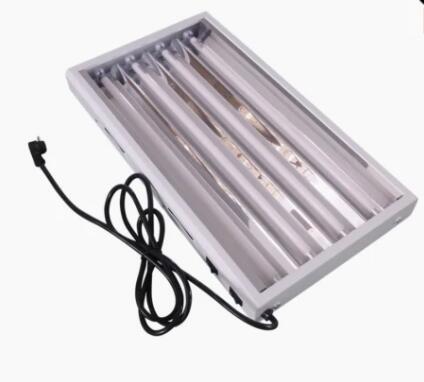Why LED Grow Lights Offer Superior Control Over Light Intensity in Indoor Farming
2024-09-07
Indoor farming has evolved significantly, and one of the key factors contributing to this evolution is the development of LED grow lights. Compared to traditional lighting systems like HID or fluorescent lights, LED grow lights provide greater control over light intensity, leading to more precise growing conditions for plants. But how do LED grow lights achieve this level of control?
1. Dimmable Technology for Fine-Tuned Light Intensity
One of the standout features of LED grow lights is their dimmability. Unlike traditional lighting systems that often operate at a fixed brightness, most LED grow lights can be adjusted across a wide range of intensities. This flexibility is beneficial for several reasons:
- Tailored Growth Stages: Different stages of plant growth—such as seedling, vegetative, and flowering—require varying light intensities. Seedlings typically need lower intensity to prevent damage, while flowering plants need brighter light for optimal yields.
- Energy Efficiency: By adjusting the light intensity to match the specific needs of the plants, growers can reduce energy consumption, making LEDs not only more effective but also more eco-friendly.
- Reduced Stress on Plants: Excess light intensity can lead to overheating and photobleaching in plants. With LED grow lights, you can easily reduce intensity to avoid stressing your plants.
2. Spectrum Control for Specific Plant Needs
Traditional grow lights, such as HPS or metal halides, emit a broad spectrum of light, some of which may be wasted by the plants. LEDs, on the other hand, offer more precise spectrum control. With the ability to fine-tune the light to specific wavelengths, LED grow lights allow for optimal light intensity that matches the needs of the plants at each growth stage.
- Blue and Red Light Adjustments: During the vegetative stage, plants thrive under blue light, while flowering plants require more red light. With LEDs, you can adjust the balance of blue and red wavelengths for the perfect intensity that supports photosynthesis and growth.
3. Even Distribution of Light
Traditional lighting systems often suffer from uneven light distribution, leading to "hot spots" where light intensity is higher in some areas and weaker in others. This inconsistency can hinder plant growth and lead to suboptimal yields.
- LED Arrays Provide Uniformity: LED grow lights are designed in arrays of diodes that distribute light more evenly across the plant canopy. By ensuring consistent light intensity across all areas of the growing space, growers can avoid issues like patchy plant development or stunted growth.
- Customizable Beam Angles: LED grow lights also allow customization of the beam angle, ensuring that light is focused where it's needed most. This feature helps to provide more precise control over light distribution, which is something traditional lighting systems struggle to achieve.
4. Integration with Smart Controls
Another advantage of LED grow lights is their compatibility with modern technology. Many LED systems are integrated with smart controllers, allowing for automated light intensity adjustments throughout the day.
- Sensors and Timers: With sensors that monitor plant conditions, growers can set their LED grow lights to automatically adjust intensity based on factors like temperature, humidity, and the plant’s growth cycle.
- Remote Monitoring: Advanced LED systems can also be managed through remote apps, giving growers real-time control over their lighting setup even when they’re not physically present.
Conclusion
LED grow lights have transformed indoor farming by offering unparalleled control over light intensity. From dimmable settings and spectrum adjustments to uniform light distribution and smart technology integration, these lights give growers the tools to optimize plant growth, reduce energy waste, and boost yields. With these advantages, it's clear why more and more farmers are making the switch from traditional lighting systems to LED grow lights.



